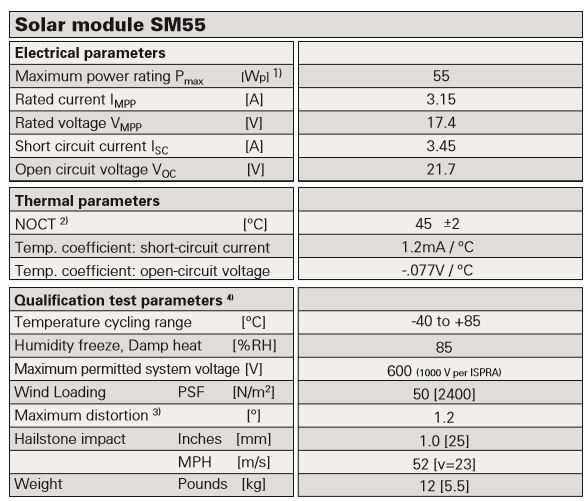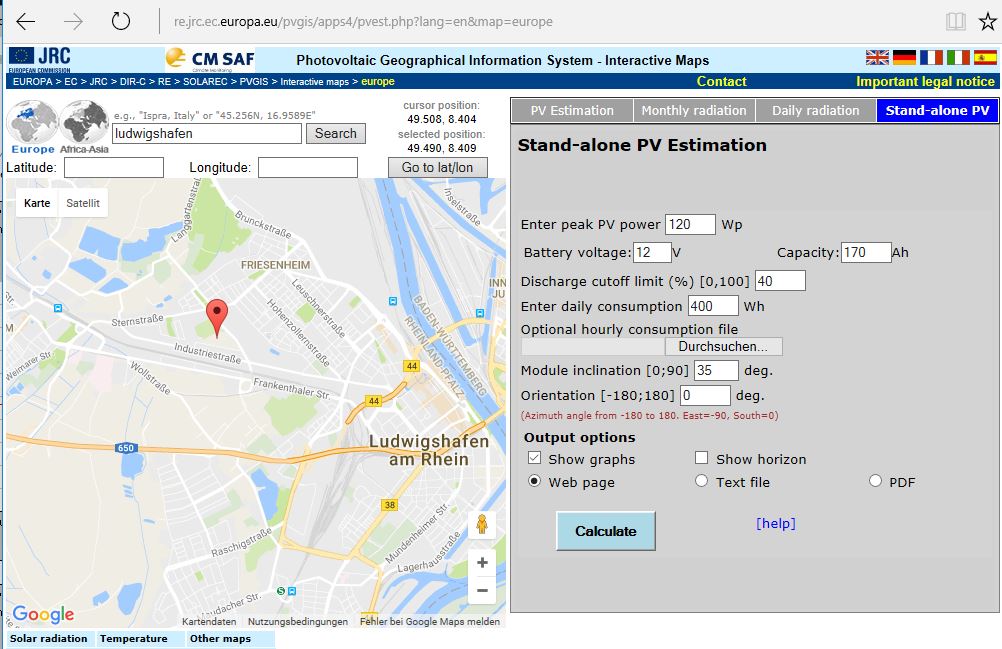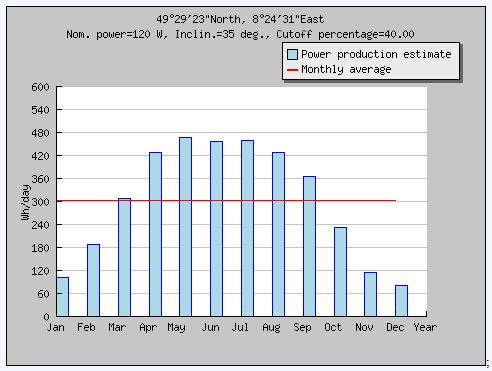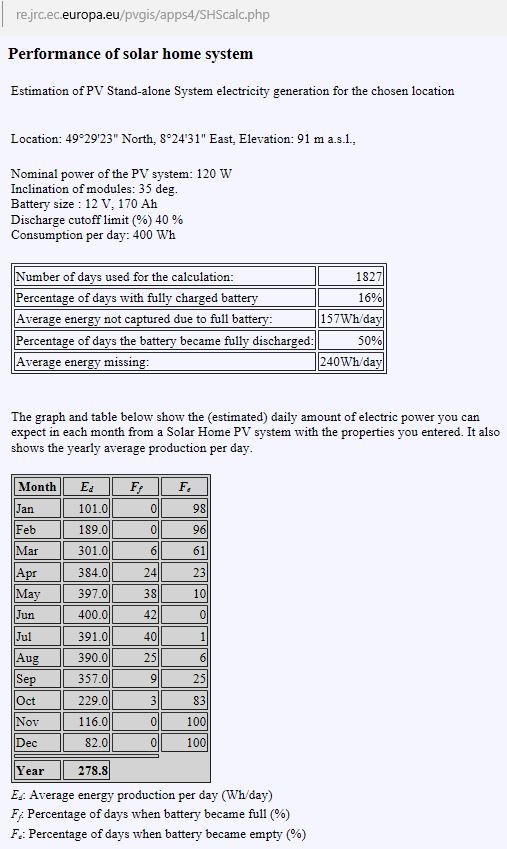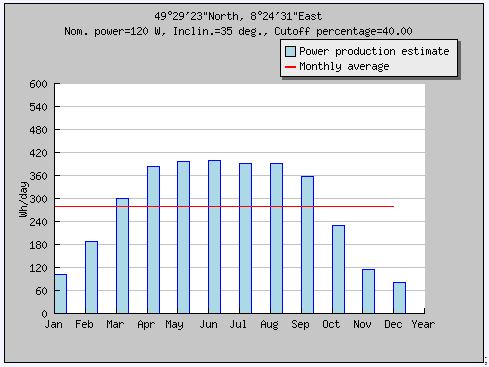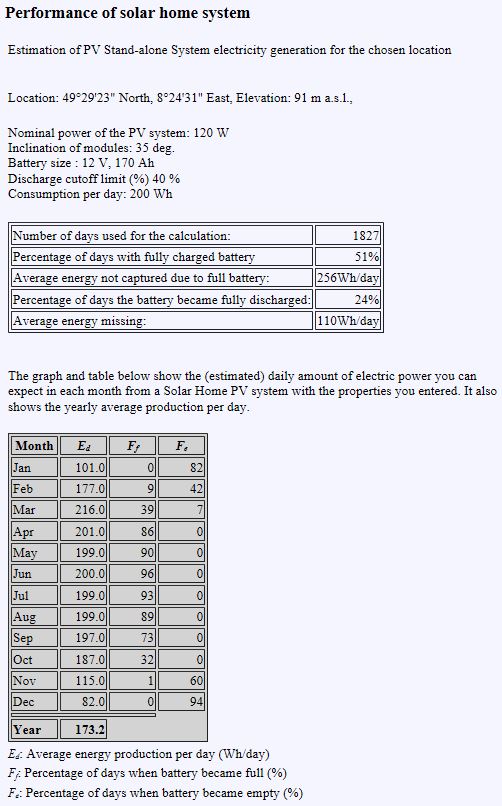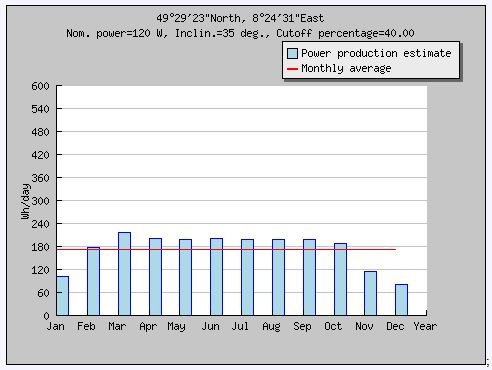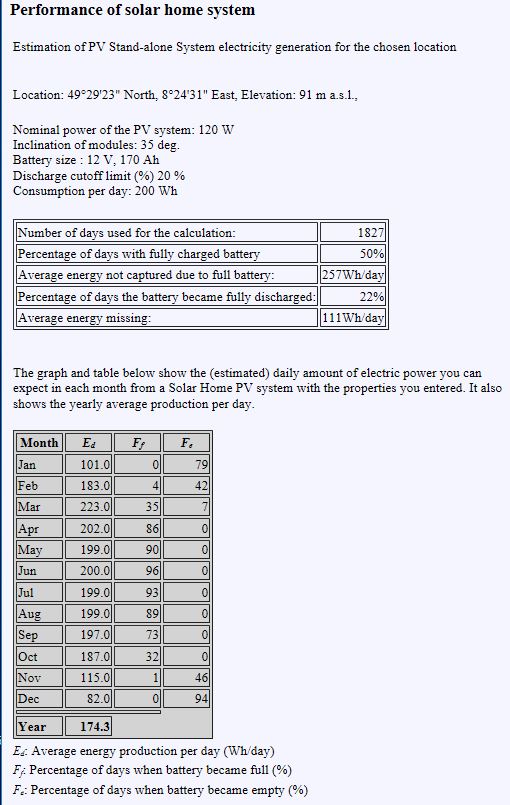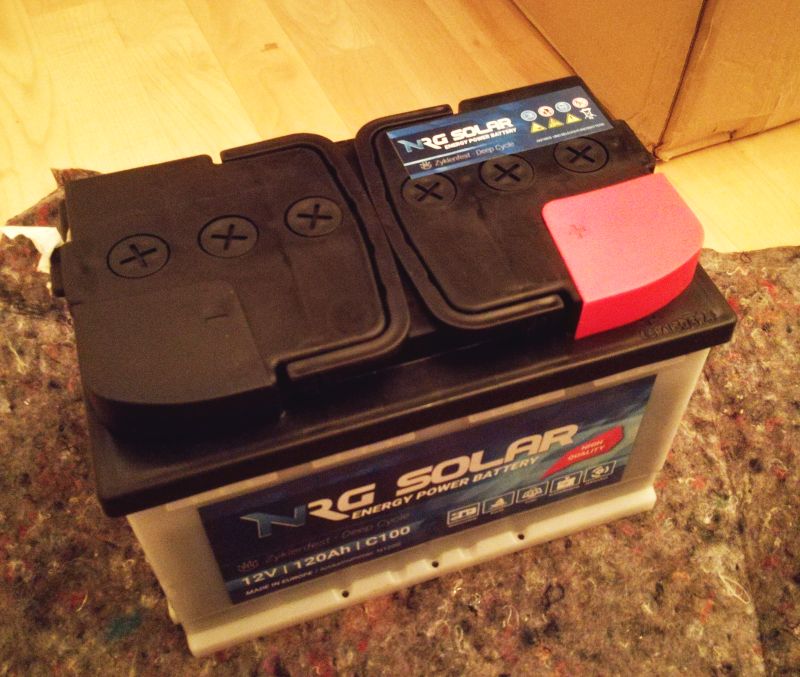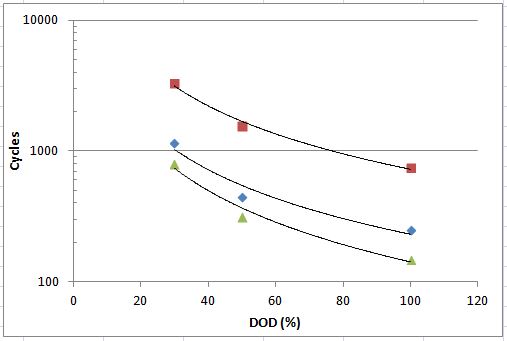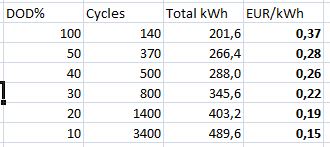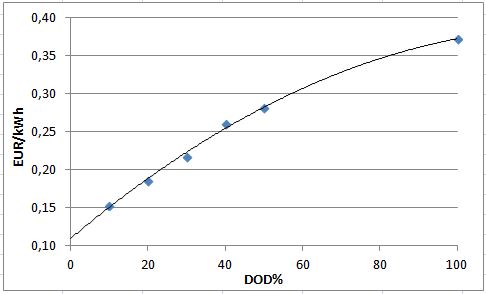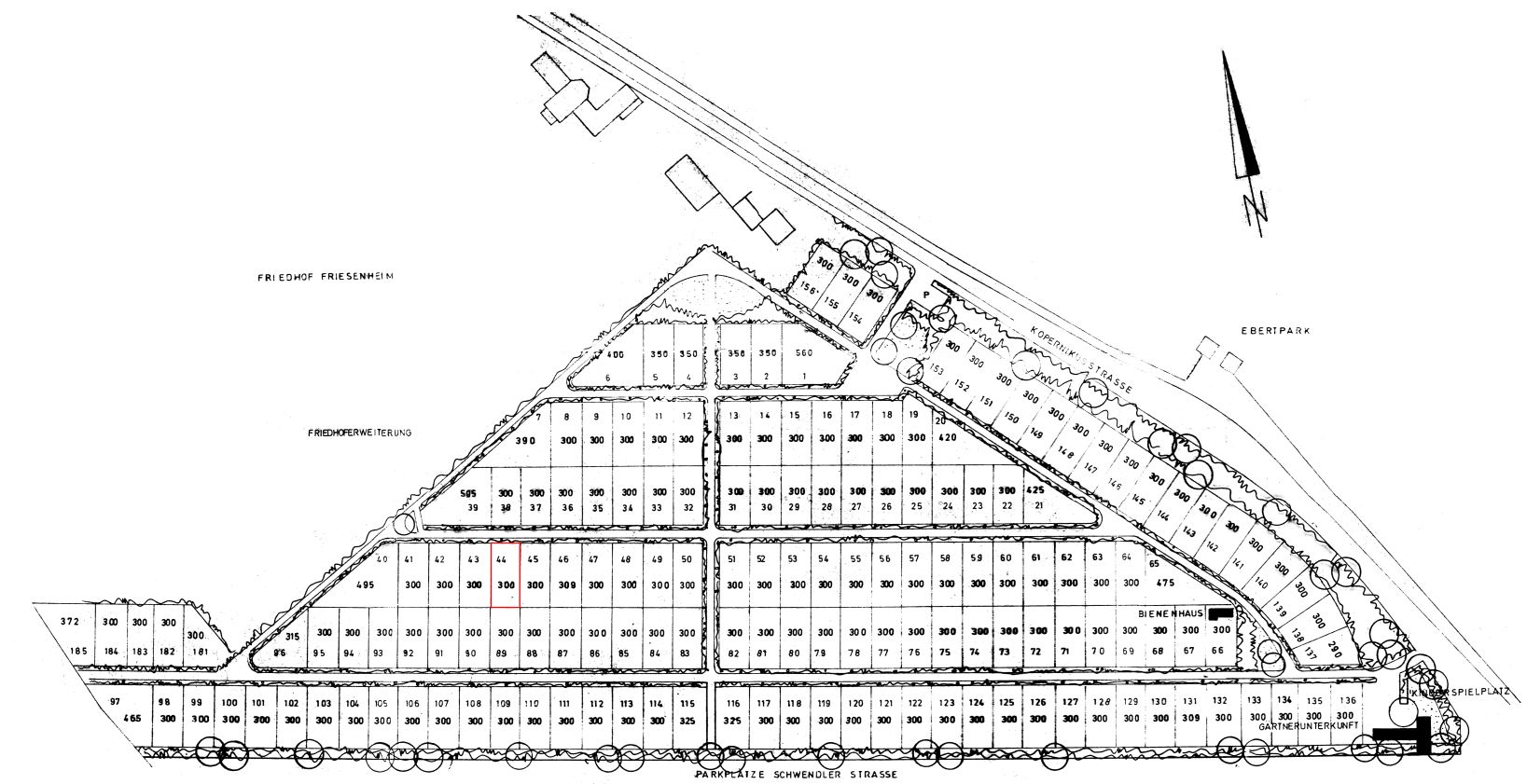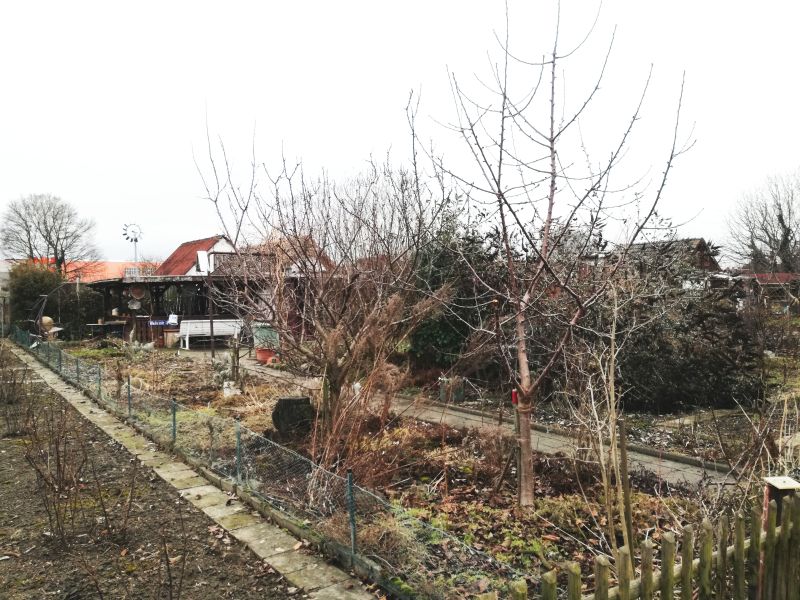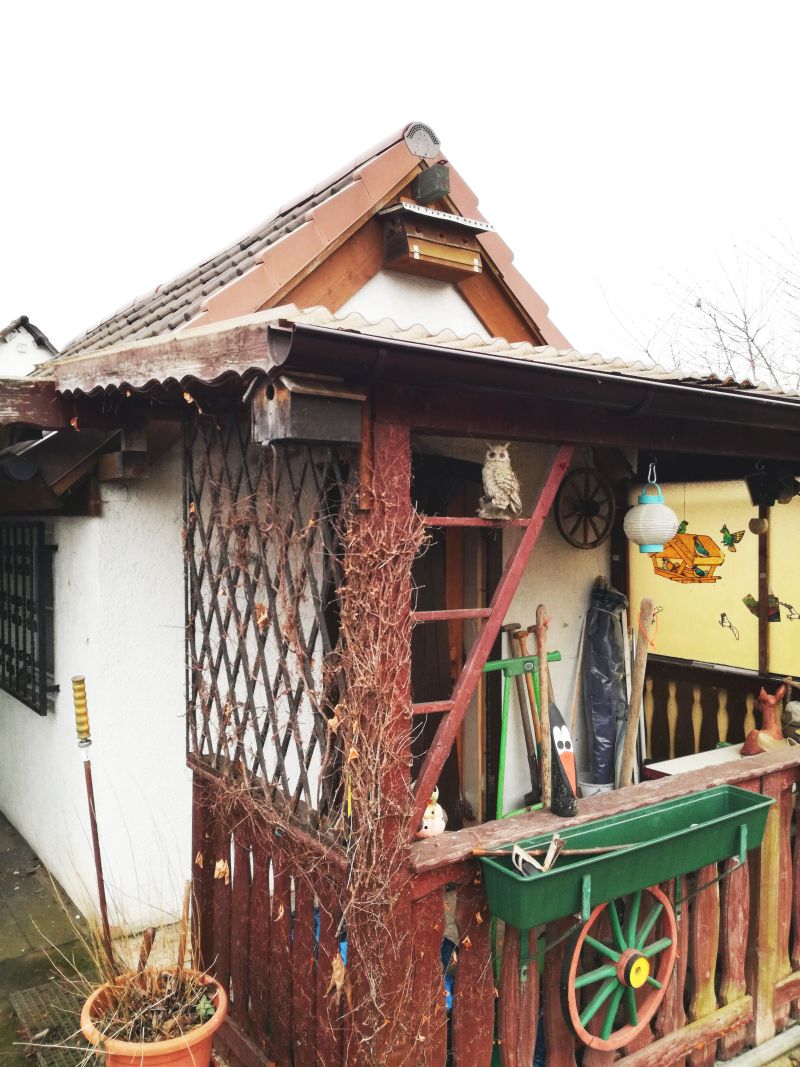Undoubtedly, a garden house will need most electric power in summer, because this is the time where you have long, worm evening. In winter, if you really want to stay in the garden house, better to switch the lights of and hibernate anyway.
So, how much yield (kWh) do you get from a photovoltaic system, located in Ludwigshafen, Germany? Well, there are very precise calculation models around, based on actual data. You only need to know the location, inclination and direction of the solar panel (and hope there is no shade!). For my location, about 8.4080 East, 49.4897 North, Orientation 192 degrees (SSW).
Then you go to Photovoltaic Estimation, and type in these numbers (select “stand-alone PV”).
Also, you need to know the Wp rating of the the photovoltaic cells. In the given case, we have 1 module “Siemens M55” (this has been around for a long time, datasheet of a current equivalent Siemens SM55 Datasheet), and a second one, quite similar, but slightly larger (need to find out the model number), all in all, 120 Wp estimated. The system also has lead acid batteries with total of 190 Ah capacity (C/100 discharge rate), but I just assume 170 Ah.
Feeding the various data into the calculator, it’s a really great tool!
Total energy that can be harvested, per day:
Now, lets be wasteful and consume an average of 400 Wh per day. That’s enough to run some lights, and a sizeable fridge all day.
A bit more conservative scenario, running an energy-efficient small fridge, and some lights (sure, you can also charge some cellphones or run a laptop computer).
Now, lets check if the battery will running low – just changed the discharge limit threshold to 20%.
Still good, seems like we will have plenty of electricity during summer the summer months – in winter, we will just switch off the fridge, anyway, it is the best time for hot rather than cold drinks.

